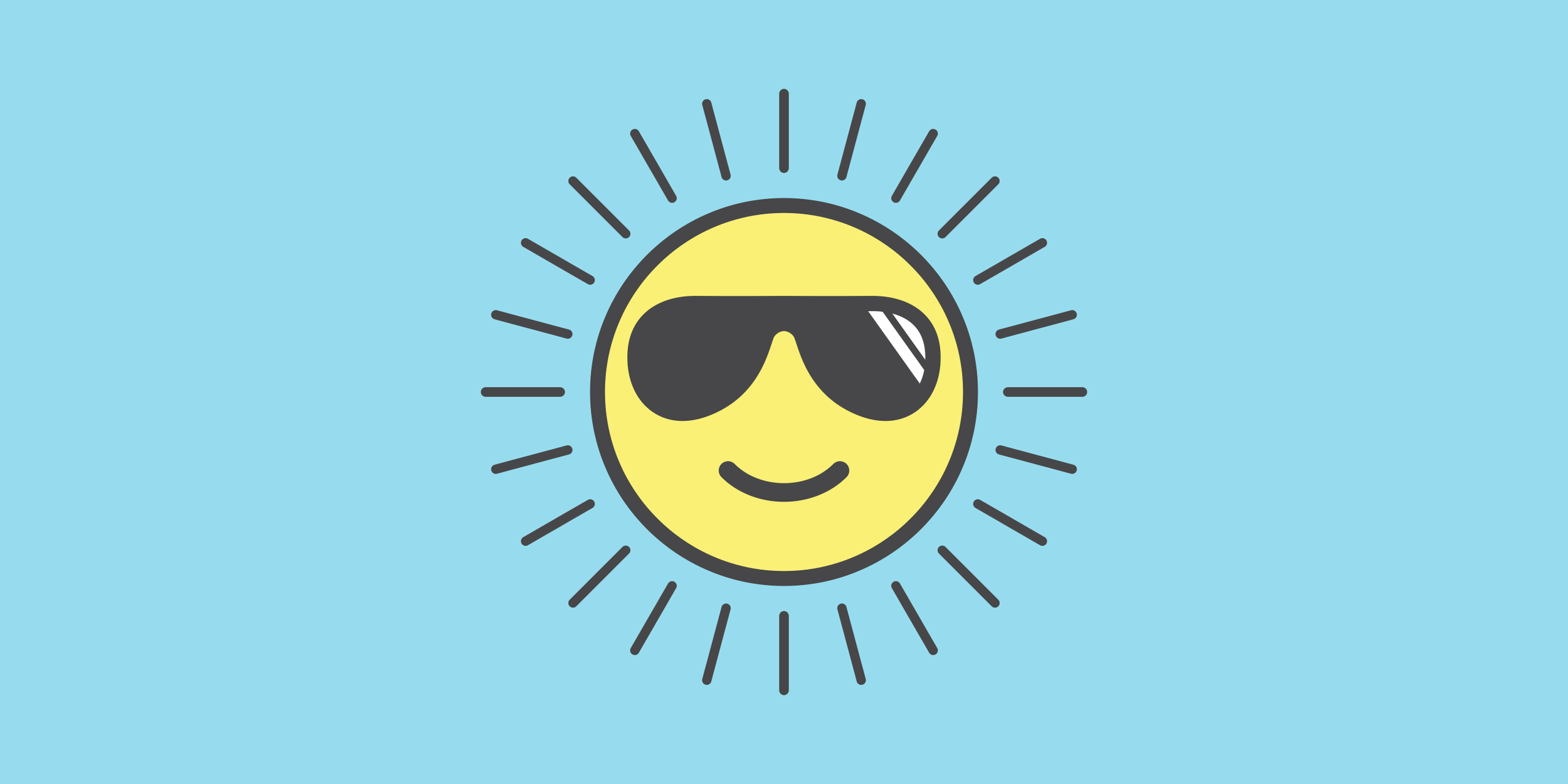7 Ways to Protect Against UV Rays
Summer is here and more people are excited to be outdoors with friends and family. With strong UV rays during the summer months, it is understandable why the U.S Department of Health and Human Services has named July as Ultraviolet (UV) Safety Month. Ultraviolet radiation exposure can have numerous negative effects on your health. In addition to sunburns and skin cancer, UV rays can also cause eye diseases such as cataracts and macular degeneration, skin growth, premature aging, and harm to your immune system. By understanding the risks associated with overexposure and learning ways to prevent UV damage, you will be able to protect yourself and your family, allowing everyone to safely enjoy the outdoors.
UNDERSTANDING UV RAYS
The main types of UV rays that have an impact on your health include UVA and UVB rays. UVB rays are the main rays that cause sunburns and cancer; however, no UV rays are safe.
According to the American Cancer Society, there are many factors that affect UV exposure including:
Time of day: UV rays are strongest in the middle of the day, between 10 am-4 pm.
Season of the year: UV rays are stronger during the spring and summer months.
Distance from the equator (latitude): UV exposure is higher near the equator
Altitude: More UV rays reach the ground at higher elevations.
Cloud cover: The effect of clouds can vary, but it is important to know that UV rays can get through to the ground, even on a cloudy day.
Reflection off surfaces: UV rays can bounce off surfaces like water, sand, snow, or pavement, leading to an increase in UV exposure.
DETERMINING UV RAYS IN YOUR AREA
The UV Index, developed by the US National Weather Service and the Environmental Protection Agency (EPA), represents how strong the UV light is on a scale from 1 to 11+. Check your weather app to see what the UV index is in your area, and limit outdoor activity when the index is on the higher end of the scale.
PREVENTING UV DAMAGE
Seek shade: Simply find shade to limit sun exposure, especially between 10 am-4 pm.
Wear long clothes: Cover your skin with long-sleeved shirts, long pants, and long skirts. Dark colors, tight fabrics, and dry clothes provide more protection.
Use sunscreen: Sunscreen does not block all UV rays and should be thought of as the first level of defense. Choose a sunscreen broad-spectrum protection (against both UVA and UVB rays) and with SPF values of 30 or greater. Reapply sunscreen throughout the day and check for expiration dates.
Wear a hat: A hat with a 2-3-inch brim all around is ideal because it protects areas that are often exposed to intense sun, such as the ears, eyes, forehead, nose, and scalp.
Put on sunglasses: Wear sunglasses with UV protection. Check the label for “UV absorption up to 400 nm” or “Meets ANSI UV Requirements”. Do not assume sunglasses provide any UV protection if there is no label.
Protect children: Parents and other caregivers should protect children from excess sun exposure by using the steps above. Educate your children on the dangers of overexposure as they become more independent. Babies younger than 6 months should be kept out of direct sunlight and protected from the sun using hats, protective clothing, and sunscreen on small areas of exposed skin - only if adequate clothing or shade is not available.
Avoid tanning beds: Tanning lamps give out UVA and usually UVB rays as well.
CARING FOR OVEREXPOSURE
Apply cool compress: Apply to the affected skin a clean towel dampened with cool tap water. Or take a cool bath with added baking soda — about 2 ounces (60 grams) per tub. Cool the skin several times a day.
Use gel, ointments, or lotion: An aloe vera lotion or gel or calamine lotion might be soothing.
Drink water: Prevent dehydration by drinking water and avoiding alcohol.
Avoid further sun exposure: While your skin heals, stay out of the sun, or protect your skin if you do go out.
Make sure you routinely check your skin for any changes. Click HERE to learn How to Do a Skin Self-Exam. Be sure to have a doctor check your skin if there are any changes to birthmarks, moles, or new marks, especially if there are alterations in the size, shape, or color.
What's Your Sun Safety IQ? Sun safety is not just for vacation. Are you sun-safe every day? Click HERE to take the American Cancer Society's quiz and find out.
References:
American Cancer Society. How Do I Protect Myself from Ultraviolet (UV) Rays?. 2019. https://www.cancer.org/healthy/be-safe-in-sun/uv-protection.html. Accessed July 13, 2021.
The Mayo Clinic. Sunburn – Diagnosis and Treatment. 2020. https://www.mayoclinic.org/diseases-conditions/sunburn/diagnosis-treatment/drc-20355928. Accessed July 13, 2021.

